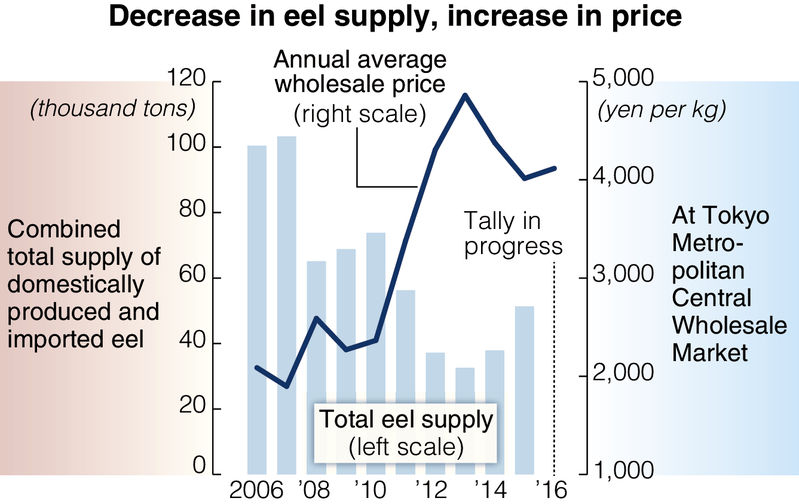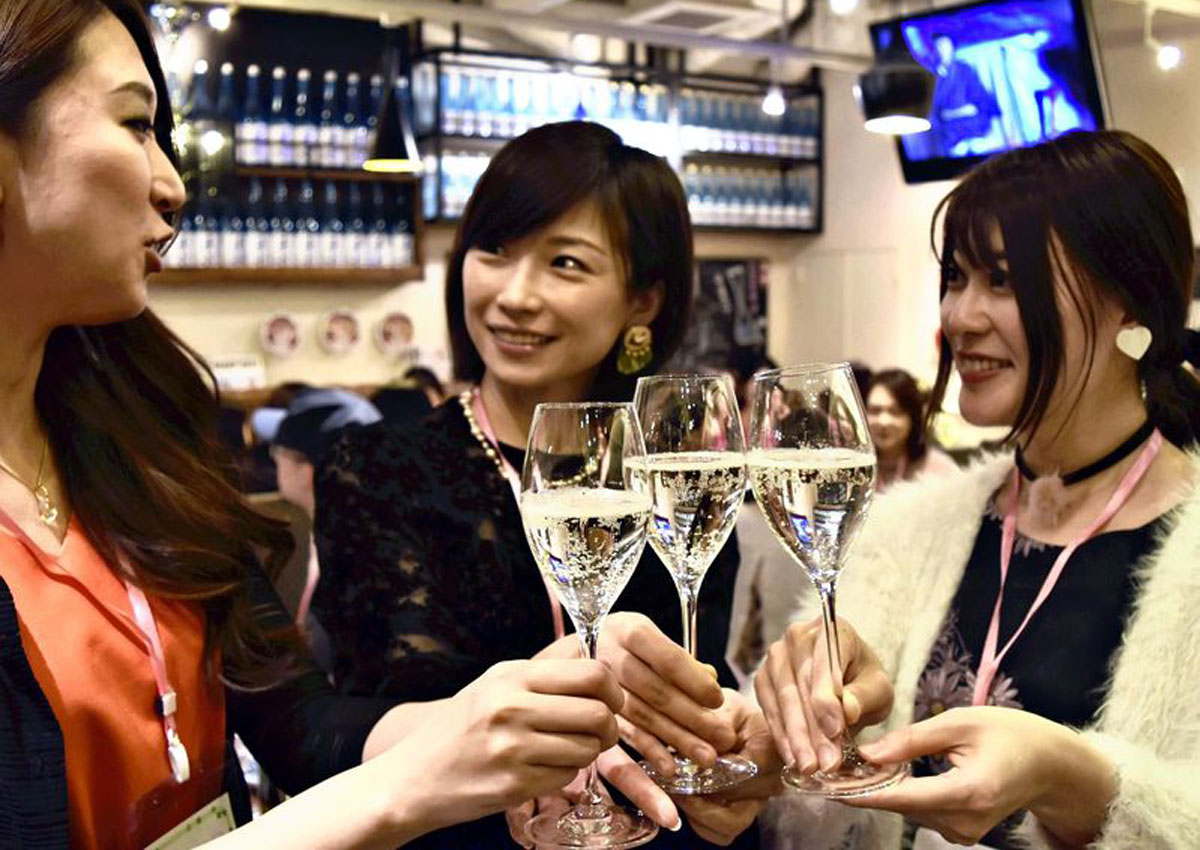July 25 is eel-eating day in Japan
Tuesday will mark one of this summer’s “doyo no ushi no hi,” a traditional eel-eating day, and this year we are likely to be able to eat eel at slightly cheaper prices than last year.
Thanks to larger catches of glass eels for farming compared to last season, the wholesale price of eels declined by about 10 per cent, retail prices have dropped for their customers. However, there is a deep-rooted concern over overfishing, making it unclear whether the price reduction will continue down the road.
Yatsumeya Nishimura, a grilled-eel shop in Meguro Ward, Tokyo, sells large grilled eels for ¥2,200 (S$26.85) and medium ones for ¥1,800. Each price is ¥200 less than last year, and the same as two years ago.
Even so, the prices are about ¥400 higher than they were about five years ago, but the shop says it attracts many customers. “The prices are still at higher levels. Actually, I want customers to eat eel at more reasonable prices,” said Kiyoshi Matsumoto, 55, the owner of the shop.
For Tuesday’s doyo no ushi no hi, major convenience store operator FamilyMart Co. was to begin selling on Friday a grilled eel bento using half of an eel produced in Kagoshima Prefecture at ¥1,880, which is ¥100 cheaper than last year. The number of pre-orders for the bento rose 20 per cent from last year.
“We have received pre-orders from men and women of all age groups, which shows the strong popularity of eel,” a spokesperson of the company said.
The wholesale price of Japanese eels used to make grilled eel is about ¥4,100 per kilogram (the average price in May at the Tokyo Metropolitan Central Wholesale Market), which is about 10 per cent cheaper than it was last year.

Thanks to greater catches of glass eels used for farming, their prices declined by nearly 40 per cent from last year. However, the Fisheries Agency is cautious about the situation, saying that there are no scientific research results proving a recovery in the number of eels.
Most Japanese eels are farmed after being caught in the wild as glass eels. At its peak, in 2000, the domestic supply of Japanese eels increased to 160,000 tons, and people could easily buy them at supermarkets and other places.
In the mid-2000s, a total of 100,000 tons of eels, including both domestic and imported eels, were available on the market. However, due to declining catches of glass eels, the supply dramatically declined to slightly over 60,000 tons in 2008.
In 2015, the latest year for which data is available, slightly over 50,000 tons of eels were supplied in the country.
The wholesale price of adult eel, which used to be about ¥2,000 per kilogram, began skyrocketing in 2011 to nearly ¥5,000 in 2013. The price of eel at restaurants and other stores also increased, and it became less affordable for people.
In 2014, the International Union for Conservation of Nature designated Japanese eels as “endangered.” In 2015, an upper limit on the quantity of Japanese eels put into farming ponds was set in Japan, China, Taiwan and other places.
However, it is widely believed that there is no end in sight to the poaching of eels. Some people point out that overfishing of eels will not stop as long as Japan, which consumes 70 per cent of the eels eaten around the world, continues to buy them at higher prices.
“Originally, eels were a luxury dish eaten on special occasions. In order to protect eel culture, we should eat them in moderation,” Katsumi Tsukamoto, professor at Nihon University who is well versed in issues involving eels from their ecology to food culture, said.
Published at Fri, 21 Jul 2017 14:00:00 +0000



